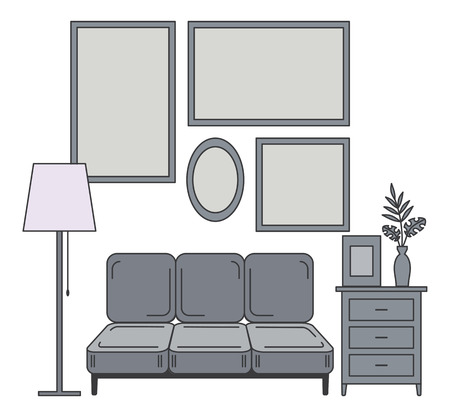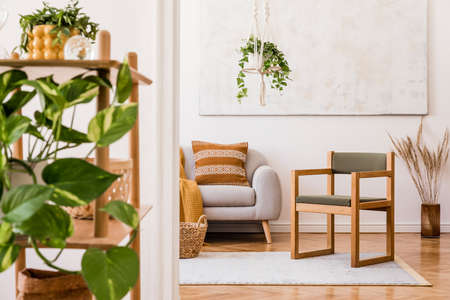1. Understanding the Unique Challenges of British Homes
When it comes to maximising space and style in British homes, it’s essential to first acknowledge the unique set of challenges these properties present. Many British homes—whether Victorian terraces, post-war semis, or council flats—are defined by compact layouts and architectural idiosyncrasies that stem from centuries of evolving building practices. Narrow hallways, oddly shaped rooms, and low ceilings are common features, making it difficult to implement grand design ideas without careful consideration. Heritage properties often come with strict planning regulations, limiting structural changes and sometimes dictating even the colour of your front door. Meanwhile, council homes tend to have a more utilitarian layout, with limited scope for major renovations. These factors mean that design solutions must be both creative and pragmatic, focusing on clever use of space and affordable upgrades that respect the property’s original character. Understanding these constraints is the first step towards transforming a typically modest British home into a stylish and functional living space.
Clever Storage Solutions for Small Spaces
When it comes to British homes, whether you’re living in a Victorian terrace or a contemporary flat, clever storage is essential to making the most of limited square footage. Integrating smart storage options not only reduces clutter but also adds style and value to your property. Here’s how you can make every inch work harder using uniquely British solutions.
Making Use of Under-Stair Spaces
In many British homes, the space under the stairs is often overlooked or relegated to hiding the hoover and a few odd shoes. However, with some thoughtful design, this area can become a valuable asset. Consider built-in drawers for shoes and outdoor gear, or even a compact desk nook for working from home. For period properties, choose cabinetry finishes that match existing woodwork; in modern homes, opt for sleek panels or painted MDF for a seamless look.
Alcove Shelving: Period Charm Meets Practicality
Alcoves beside fireplaces are classic features in UK homes. Installing floating shelves or fitted cupboards here offers tailored storage without encroaching on precious floor area. In older homes, use painted woodwork to complement original skirting and cornices; in newer builds, try open shelving with baskets for a fresh twist.
Window Seat Cupboards: Multi-Functional Comfort
A window seat isn’t just cosy; it’s an ideal spot for hidden storage beneath hinged lids or pull-out drawers. This solution works beautifully in bay windows common to Edwardian and Victorian properties, as well as modern extensions. Finish with cushions in British textiles like tweed or wool for extra warmth.
Built-In Cabinetry: Tailored to Your Home
Whether it’s floor-to-ceiling wardrobes in bedrooms or bespoke cabinets in hallways, built-in furniture maximises awkward spaces—think sloping ceilings or chimney breasts. For a truly British touch, select Shaker-style doors or heritage paint shades.
Comparison Table: Storage Options at a Glance
| Storage Solution | Best For | Typical Locations | Cost Efficiency |
|---|---|---|---|
| Under-stair Storage | Shoes, coats, office supplies | Hallways, entrances | High (DIY-friendly) |
| Alcove Shelving | Books, décor, media units | Living rooms, bedrooms | Medium (customisable) |
| Window Seat Cupboards | Linen, toys, seasonal items | Bays, landings | High (adds seating too) |
| Built-in Cabinetry | Clothes, utilities, general storage | Bedrooms, hallways | Medium-High (maximises space) |
This approach blends practicality with classic British character—proof that you don’t need a grand budget to achieve both style and function at home.

3. Affordable Design Upgrades with Local Flair
When it comes to enhancing British homes on a budget, practical and stylish solutions can be found by looking close to home. UK-sourced materials not only reduce costs and environmental impact but also bring a sense of authenticity and heritage into your space. For example, using reclaimed timber from local salvage yards for shelving or feature walls adds warmth and character, while supporting local businesses.
High Street Finds for Instant Impact
The British high street remains a treasure trove for affordable design. Chains like IKEA, Dunelm, and John Lewis offer stylish storage solutions—think slimline bookcases or stackable baskets—that fit snugly into compact rooms. For soft furnishings, classic British checks, florals, or herringbone patterns available at Marks & Spencer or Habitat can instantly lift a neutral palette without breaking the bank.
Incorporating Iconic British Motifs
Celebrate national identity by weaving in iconic motifs such as Union Jack cushions, London Underground-inspired prints, or vintage railway signage. These elements give your home a playful yet unmistakably British touch. Sourcing these items from local markets or charity shops often uncovers unique finds that tell a story and spark conversation.
The Art of Upcycling: Tradition Meets Innovation
Upcycling is deeply rooted in British culture—think of wartime “make do and mend” ingenuity. Repurpose old ladders as towel racks, transform crates into coffee tables, or paint tired furniture in bold Farrow & Ball hues for an instant refresh. Not only does this approach save money and reduce waste, but it also imbues your home with bespoke charm and functionality tailored to your needs.
By combining high street bargains, traditional upcycling techniques, and locally sourced materials, you can create a home that is both stylish and unmistakably British—without stretching your budget.
4. Creating Light and Illusion of Space
British homes often contend with limited natural light and compact room sizes, especially in traditional terraced or semi-detached properties. Fortunately, there are several low-cost design techniques that can dramatically enhance the sense of space and brightness within these settings.
Mirrors: Multiplying Light
Strategically placed mirrors are a classic trick for bouncing light around a room and creating the illusion of greater depth. In the UK, where cloudy days are common, positioning a large mirror opposite or adjacent to a window can maximise available daylight. For narrow hallways typical in many British homes, a long horizontal mirror visually widens the space. Even smaller mirrors grouped together can create interest and break up blank walls without overwhelming the décor.
Light Colours: Expanding Visually
Pale colour palettes work wonders to reflect light and open up cramped interiors. Shades such as soft white, cream, pale grey, or muted pastels are particularly effective for UK homes as they counteract overcast skies and make rooms feel airier. If you prefer some warmth, opt for off-whites with subtle undertones rather than stark white, which can appear cold in northern light.
| Area | Recommended Colour | Effect |
|---|---|---|
| Lounge/Living Room | Pale grey or warm beige | Makes space feel larger yet cosy |
| Bedroom | Soft pastel blue or green | Adds calmness; reflects morning light |
| Kitchen/Diner | Cream or light sage | Brightens even on dull days |
Open Shelving: Airy Storage Solutions
Traditional closed cabinets can make small British rooms feel boxy. Open shelving—whether above kitchen counters, in alcoves, or as floating shelves in living areas—provides practical storage while maintaining visual flow. Keep shelves tidy and avoid overcrowding; display only select items for an uncluttered effect that draws the eye upward, enhancing vertical space.
Glass: Letting Light Travel Further
Glass is an underutilised material in many UK homes but can be transformative. Consider glass doors between rooms or replacing solid cabinet fronts with frosted glass to let light filter through spaces that would otherwise feel cut off. Glass tabletops and side panels on furniture also help reduce visual weight.
Quick Reference: Space-Enhancing Techniques for UK Homes
| Technique | Main Benefit | Best Application Area |
|---|---|---|
| Mirrors | Amplifies light; adds depth | Hallways, lounges, bedrooms |
| Light Colours | Bounces daylight; feels spacious | All rooms, especially north-facing ones |
| Open Shelving | Keeps sightlines open; declutters visually | Kitchens, alcoves, home offices |
| Glass Elements | Lets light pass freely; modern touch | Doors, cabinets, small tables |
A Thoughtful Approach to Small Spaces
The combination of these techniques—tailored to the realities of British weather and architecture—can help any homeowner create interiors that feel brighter and far more generous than their square footage suggests. With careful placement and colour selection, it’s possible to maximise both style and function affordably.
5. Flexible and Multi-Purpose Living Areas
Modern British homes, often defined by their compact layouts, demand creative approaches to living space. To maximise both space and style without overspending, experimental room layouts and flexible furniture are key allies. With the rise of remote working, entertaining at home, and the ever-changing needs of family life, adaptability is now more crucial than ever.
Experimenting with Room Layouts
A practical first step is to challenge traditional room arrangements. Consider open-plan living where possible, or use lightweight partitions such as bookcases or folding screens to subtly divide areas for work and relaxation. Try positioning your desk behind a sofa or in an underused alcove to carve out a workspace that doesn’t dominate the main living area.
Flexible Furniture Solutions
Investing in multi-purpose furniture can significantly increase functionality. Think fold-down desks that double as dining tables, ottomans with hidden storage, or modular sofas that adapt for lounging, sleeping, or seating guests. In particular, wall-mounted drop-leaf tables and stackable chairs are cost-effective options widely available across UK retailers.
Adapting to Daily Needs
The most successful spaces evolve throughout the day: a kitchen table may serve as a workstation during office hours, then quickly convert back to family dining in the evening. Mobile trolleys provide additional surface and storage, rolling between zones as required. For those who entertain regularly, nesting tables and extendable dining sets offer flexibility without cluttering precious square footage.
By prioritising flexibility and experimenting with layout and furnishings, British homeowners can create stylish yet practical living environments—tailored for work, play, and everything in between—without exceeding their budget.
6. Gardens, Balconies, and Outdoor Nooks
Embracing the long-standing British knack for transforming even the smallest outdoor space into a haven, it’s possible to maximise both functionality and charm without a hefty price tag. Urban gardens, modest balconies, and compact terraces can all be elevated with clever, low-cost solutions that prioritise both style and practicality.
Space-Savvy Planting
Opt for container gardening using classic terracotta pots, upcycled wooden crates, or even painted tin cans. This approach is flexible—perfect for renters or those keen to switch things up seasonally—and allows you to curate a lush mix of herbs, wildflowers, or pollinator-friendly plants. Choose vertical growers like runner beans or sweet peas along trellises to add height without sacrificing precious floor space.
Vertical Gardening: Going Upwards
British homes often face limited ground area outdoors. Installing wall-mounted planters or using hanging baskets is an affordable way to introduce greenery where it’s needed most. Consider stacking recycled pallets against walls for a rustic plant display or fixing rows of hooks for trailing species such as ivy or fuchsias. Vertical gardening not only saves space but also creates visual interest and privacy in overlooked nooks.
Affordable Outdoor Living Solutions
Transforming your garden or balcony into an inviting retreat doesn’t demand deep pockets. Repurpose old benches with weatherproof cushions made from offcuts of oilcloth or robust canvas. String up festoon lights for ambient evenings and lay down inexpensive outdoor rugs to define zones for relaxing or dining alfresco. For terraces and small patios, folding bistro sets are a classic choice: practical, stylish, and easy to store when not in use.
By tapping into the British tradition of resourcefulness, you can enhance your home’s outside spaces—however small—with thoughtful design moves that offer both comfort and curb appeal. The key lies in layering textures, maximising vertical potential, and using every available nook to reflect your personality while keeping costs firmly in check.
7. Sourcing and Sustainability on a Budget
Adopting sustainable practices in home design doesn’t have to mean spending more—in fact, it often goes hand-in-hand with budget-friendly choices. One of the most rewarding ways to maximise style while minimising costs is by sourcing second-hand items. The UK’s network of charity shops, vintage fairs, and online marketplaces like Gumtree and Facebook Marketplace offer a treasure trove of pre-loved furniture and décor, all waiting for a new lease of life. With a keen eye and some patience, you can uncover everything from mid-century sideboards to quirky artwork that adds character to your space.
Beyond the thrill of finding a bargain, buying second-hand reduces waste and carbon footprint. Many British communities also have regular jumble sales or car boot sales, where haggling is part of the fun and every purchase supports local causes or individuals. Look out for quality materials—solid wood tables or genuine wool rugs—that may simply need a little TLC. Upcycling projects are another sustainable approach: sanding down an old chest of drawers or re-covering dining chairs can transform dated pieces into unique focal points.
Embracing sustainability extends beyond shopping habits. Consider implementing energy-efficient lighting, such as LED bulbs, and use natural paints or finishes where possible. Incorporating indoor plants not only brings freshness to your home but also improves air quality—an affordable win-win. Reuse jars as storage solutions or repurpose wooden crates for shelving; small changes add up.
The British penchant for resourcefulness shines when you blend these eco-conscious practices with local culture: supporting charity shops keeps money within the community, promotes circular economy principles, and gives your home an authentic sense of place. Ultimately, designing a beautiful, practical home on a budget is entirely achievable—and when you prioritise sustainability, your efforts benefit both your pocket and the planet.


